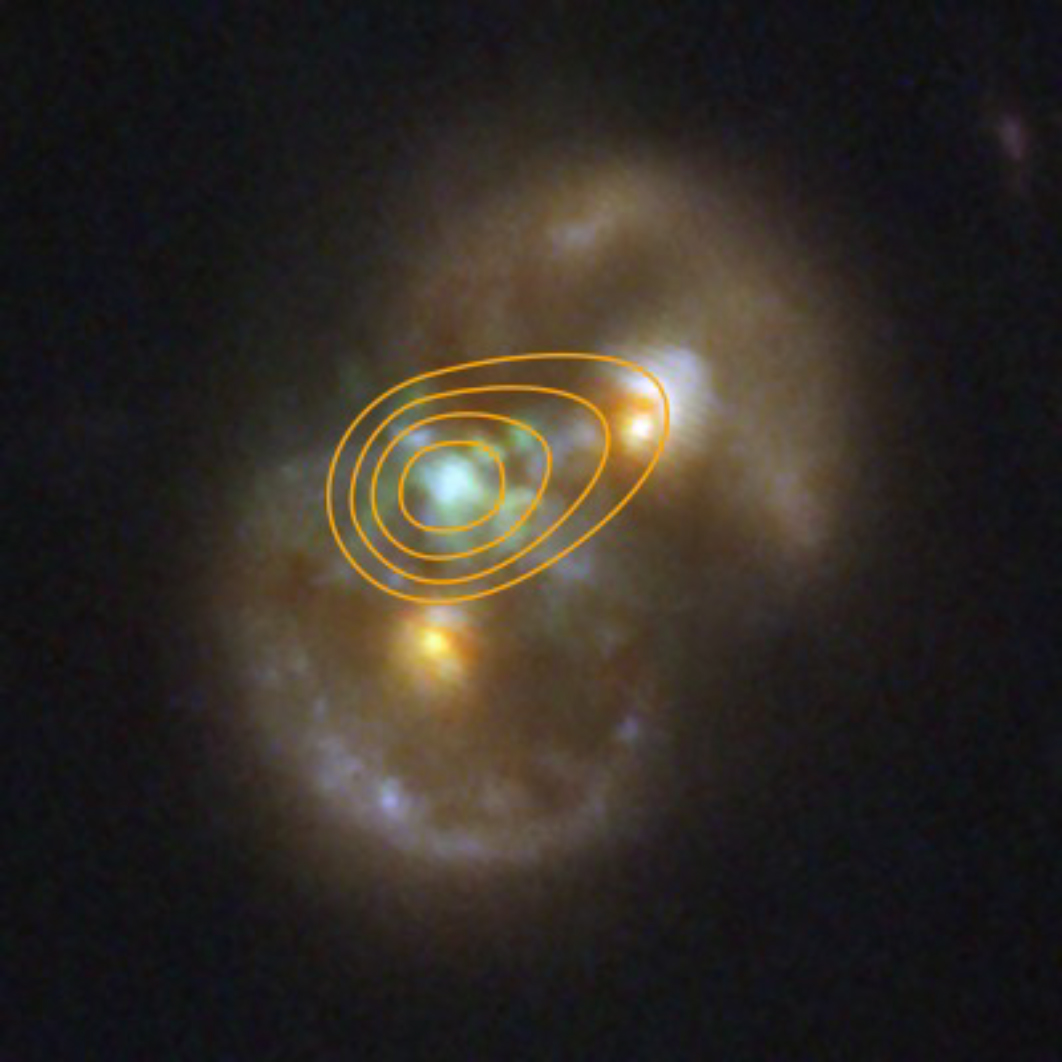How did supermassive black holes come to be? Astronomers have two hypotheses for their formation, and now one of them might have gotten the first tantalizing piece of direct evidence. Researchers report the observation of a supermassive black hole that might have formed by direct collapse.
The work reported is a curious beast, part of it comes from a peer-reviewed paper, while the rest is ongoing work strengthening the case for the team’s idea about this object. There is a galaxy merger whose light has traveled for 8.3 billion years to reach us. Their collision makes them look like the infinity symbol (∞), and for this reason it has been dubbed the Infinity Galaxy.
“Everything is unusual about this galaxy. Not only does it look very strange, but it also has this supermassive black hole that’s pulling a lot of material in,” lead author Pieter van Dokkum, from Yale University, said in a statement. “The biggest surprise of all was that the black hole was not located inside either of the two nuclei but in the middle. We asked ourselves: How can we make sense of this?”
“Finding a black hole that’s not in the nucleus of a massive galaxy is in itself unusual, but what’s even more unusual is the story of how it may have gotten there. It likely didn’t just arrive there, but instead it formed there. And pretty recently. In other words, we think we’re witnessing the birth of a supermassive black hole – something that has never been seen before.”
“The idea is that the black hole formed by direct collapse. A massive cloud of gas was pushed together so that a giant black hole forms, and thanks to the cloud, it quickly grows to supermassive size. The alternative is to start with black holes produced by stars, and have a lot of collisions, so that they become supermassive. This is known as the “light seed” hypothesis.
Several research groups have used JWST to study supermassive black holes in the very early universe, and found supermassive black holes much heavier than expected. Heavier than what you should be able to get with the light seed. But there has not been a direct observation of finding one in the process.

Radio emissions (the yellow contour lines) agree with JWST on the presence of a third supermassive black hole in this galaxy merger.
Image Credit: NASA, ESA, CSA, STScI, VLA, P. van Dokkum (Yale University).
This is why this galaxy is exciting. The collision could create a dense knot of gas that turns into a supermassive black hole weighing a million times our Sun. A crucial test for this would be comparing the velocity of the surrounding gas and the supermassive black hole. If they are similar, the black hole must have formed there. To check this, the team applied and received the director’s discretionary time on JWST to study this galaxy. This is what the preliminary results suggest.
“First, the presence of an extended distribution of ionized gas in between the two nuclei is confirmed. Second, the black hole is beautifully in the middle of the velocity distribution of this surrounding gas – as expected if it formed there. This is the key result that we were after!
“Third, as an unexpected bonus, it turns out that both galaxy nuclei also have an active supermassive black hole. So, this system has three confirmed active black holes: two very massive ones in both of the galaxy nuclei, and the one in between them that might have formed there.
“We can’t say definitively that we have found a direct collapse black hole. But we can say that these new data strengthen the case that we’re seeing a newborn black hole, while eliminating some of the competing explanations. We will continue to pore through the data and investigate these possibilities.”
We will certainly hear more about this fascinating object and the infinity galaxy. The paper was accepted for publication by The Astrophysical Journal Letters.
Source Link: Newly Discovered “Infinity Galaxy” Might Explain How Supermassive Black Hole Came To Be